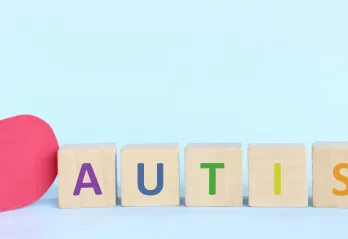Teaching Kids About Autism: Tips and Activities for Autism Acceptance Month

April is Autism Acceptance Month, a time to celebrate and support autistic individuals while fostering understanding and inclusion. During Before and After School Programming this month, we will be diving into activities to learn more about autism and neurodiversity. Here are some engaging ways to teach your child about autism at home.
1. Start with a Conversation
Begin by explaining that everyone’s brain works differently, and that’s what makes each person unique. Autism is simply one way a brain can work, and autistic individuals may think, communicate, and experience the world differently. Use positive language and encourage curiosity by inviting your child to ask questions.
2. Read Books Together
Books are a wonderful way to introduce autism in an accessible and age-appropriate manner. Here are some excellent books to explore:
- My Friend Has Autism by Amanda Doering Tourville – A simple introduction to autism from a child’s perspective.
- A Friend for Henry by Jenn Bailey – A touching story about a boy with autism navigating friendships.
- Just Ask! Be Different, Be Brave, Be You by Sonia Sotomayor – Encourages children to embrace differences, including autism.
- All My Stripes by Shaina Rudolph and Danielle Royer – A beautifully illustrated book about an autistic zebra learning to appreciate his uniqueness.
- The Girl Who Thought in Pictures: The Story of Dr. Temple Grandin by Julia Finley Mosca – A biography of the inspiring autistic scientist and advocate.
3. Watch Kid-Friendly Videos
Visual storytelling can help reinforce what your child learns. Look for short, engaging videos that explain autism in a positive light. Some great options include:
- "Amazing Things Happen" – A kid-friendly animated video about autism.
- Sesame Street’s "Meet Julia" – Introduces Julia, a lovable autistic Muppet, and shows how she experiences the world.
- The "Pablo" series – An animated show created by and for autistic individuals, showcasing their perspectives.
4. TV Shows Featuring Autistic Characters
Many children's TV shows now include autistic characters to promote understanding and acceptance. Here are some notable ones:
- Julia (Sesame Street) – A four-year-old Muppet with autism who helps kids learn about neurodiversity through her unique ways of communicating and playing.
- Carl (Arthur) – A character who experiences the world differently due to autism, helping to teach empathy and awareness.
- Pablo (Pablo) – A young autistic boy who uses art and imagination to express himself, offering insight into the autistic experience.
- Brayden (Hero Elementary) – A student at a school for superheroes who showcases unique strengths and perspectives as an autistic character.
Watching these shows with your child can provide opportunities for discussion and learning in a natural, engaging way.
5. Practice Inclusion Through Play
Encourage playtime activities that promote empathy and inclusion:
- Role-playing: Act out social scenarios with dolls or action figures to discuss different ways people communicate and interact.
- Sensory Play: Set up a sensory-friendly space with textured materials, kinetic sand, or noise-canceling headphones to help children understand sensory differences.
- Cooperative Games: Play board games that require teamwork and patience, emphasizing the importance of understanding and cooperation.
6. Encourage Acts of Kindness
Discuss ways your child can be a supportive friend to autistic peers. Some ideas include:
- Being patient if someone takes longer to respond.
- Finding shared interests to build friendships.
- Respecting personal space and sensory needs.
- Speaking up if they see someone being excluded.
7. Attend Community Events
Check if your local library, community center, or school is hosting Autism Acceptance Month events. Many places offer storytimes, workshops, or sensory-friendly activities that encourage kids to engage with neurodiversity in a meaningful way.
Final Thoughts
Teaching children about autism helps build a more inclusive and compassionate world. By fostering awareness, reading books, engaging in activities, and encouraging kindness, you can help your child become an ally and a friend to autistic individuals.
This Autism Acceptance Month, let’s celebrate differences and embrace the beauty of neurodiversity together!
Author
